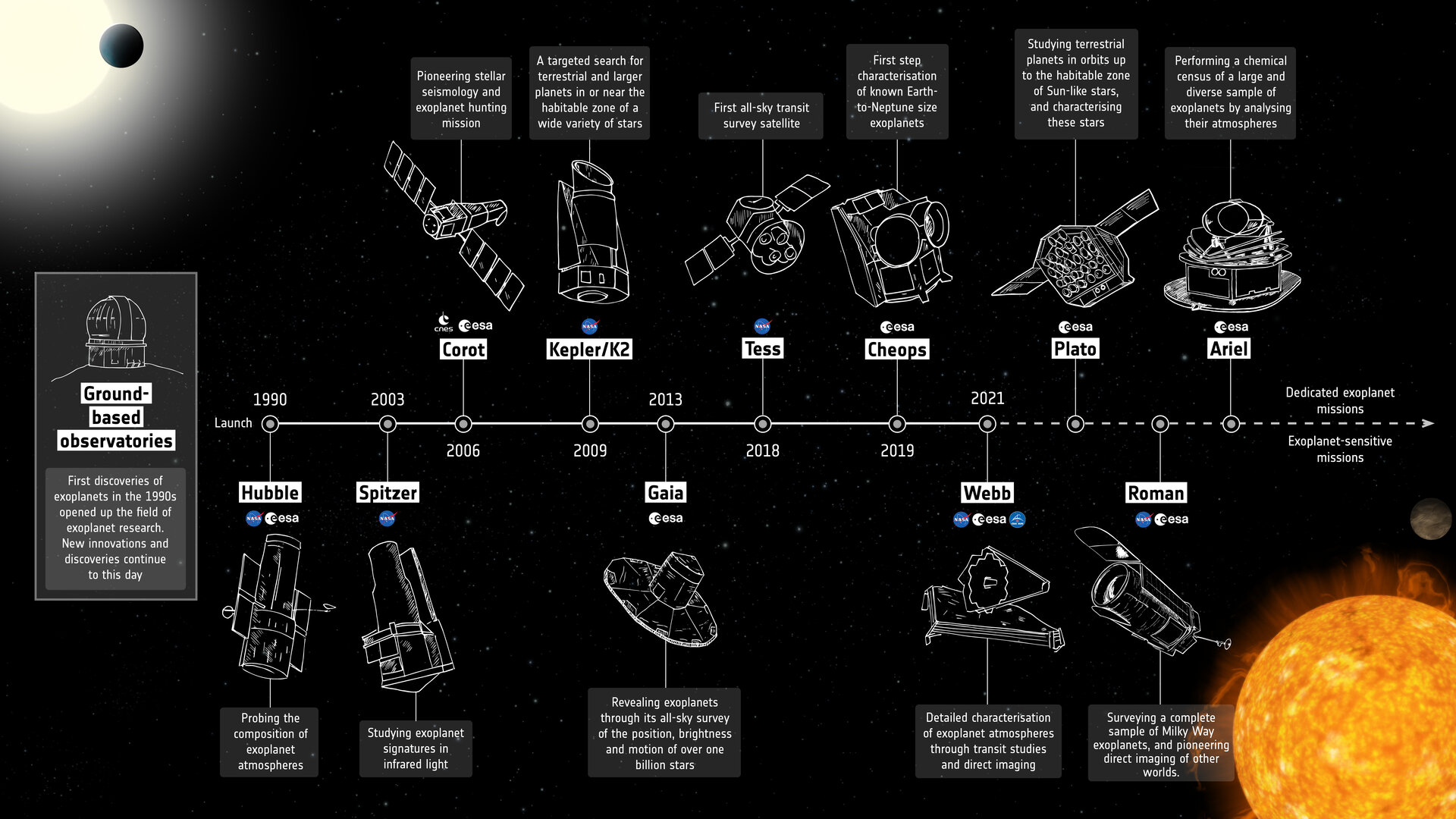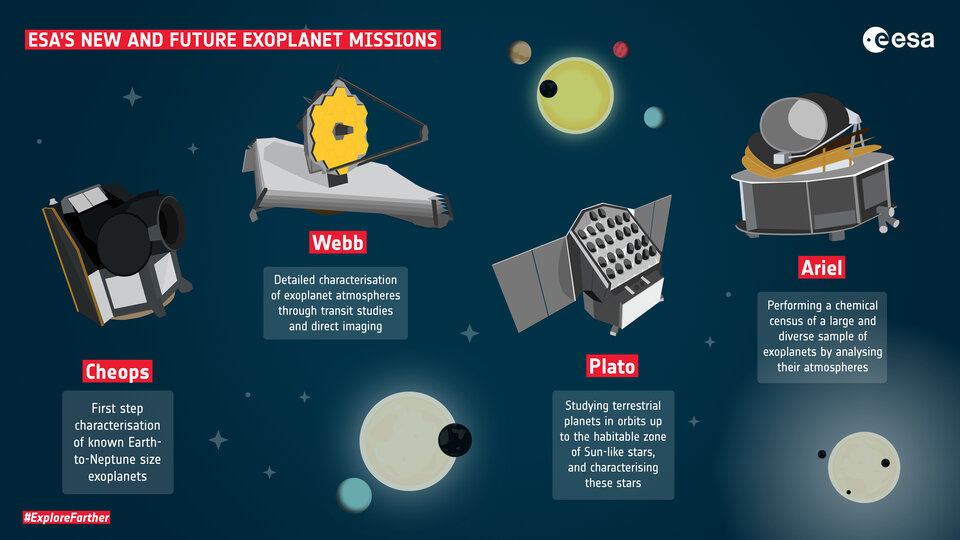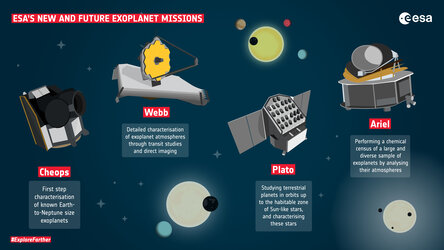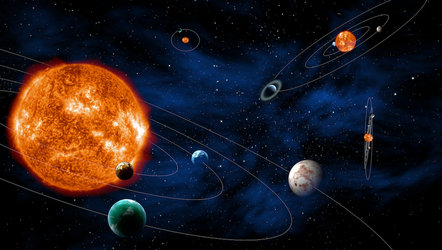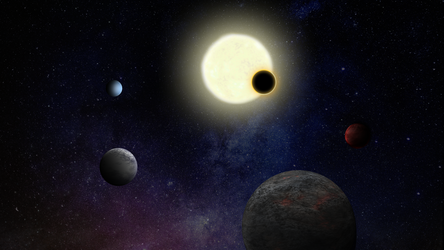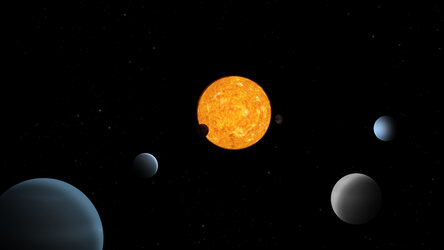ESA’s exoplanet missions
One of the central questions of ESA’s Cosmic Vision is: “What are the conditions for planet formation and the emergence of life?” ESA’s past, present and future exoplanet missions are designed to tackle this question.
Dedicated exoplanet fleet
ESA’s fleet of dedicated exoplanet missions is ever growing. In 2019, Cheops, the CHaracterising ExOPlanet Satellite was launched. The telescope is on a quest to characterise known exoplanets, refining their radii, masses, bulk compositions, and even atmospheres. Upcoming missions Plato (PLAnetary Transits and Oscillations of stars) and Ariel (Atmospheric Remote-Sensing Infrared Exoplanet Large-survey) are set to join the fleet in 2026 and 2029 respectively. These two missions will aid to the characterisation of known and the discovery of new exoplanets. Plato will focus on observing Earth-like planets in long orbits around their Sun-like stars. Ariel is set to study the atmospheres of a huge variety of exoplanets.
Other missions
Other ESA missions do not have exoplanets as their sole focus but were called to life to answer a variety of scientific questions. However, their mission design also allows for some spectacular advances in exoplanetary research. Gaia, ESA’s mission mapping the Milky Way, accurately measures positions and motions of stars over long periods of time, revealing tiny motions caused by otherwise unseen planets orbiting them. Gaia also helps us to study the characteristics of the stars around which exoplanets orbit, providing fundamental information about the environment and conditions in which the star and planet formed and evolved. The James Webb Space Telescope is optimised to study objects in infrared light. These wavelengths of light contain specific signatures of molecules that are used by Webb to study the molecular content of atmospheres on exoplanets. Both telescopes are also capable of detecting new exoplanets by looking at the dimming of starlight caused by planets moving in front of their stars, from our point of view. Finally, the Nancy Grace Roman Space Telescope is set to launch in late 2026 and will help find new planets using microlensing effects.
Exoplanet mission timeline
Our current and future exoplanet missions could not have been possible without their predecessors discovering the exoplanets they will be characterising. Ever since the first confirmation of an exoplanet in the 1990s, numerous missions and ground-based observatories have dedicated their time to discovering new candidates using a variety of detection methods.
These methods consist of creative ways of deducing the presence of exoplanets around stars in the Milky Way. Some methods focus on the gravitational effects that planets cause on the motion of their host stars. Others look at the variation in brightness of stars as planets cross their face. An exoplanet can also be discovered by the effect it has on the light from an object in the background. There are also exoplanets which could be imaged directly by telescopes.


